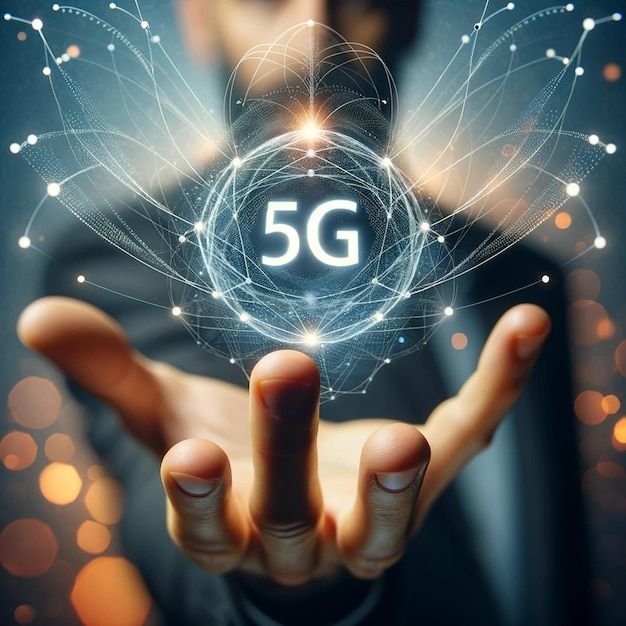Beyond Speed: Unpacking the Transformative Power of 5G Networks
For years, the buzzword “5G” has permeated tech discussions, carrier advertisements, and headlines, often touted as the next giant leap in connectivity. But beyond the hype of faster smartphone downloads, what is 5G, and why does it truly represent a paradigm shift poised to reshape industries and our daily lives? This next-generation wireless technology is far more than just an incremental upgrade; it’s the foundation for a hyper-connected future.
What is 5G? More Than Just “Faster 4G”
At its core, 5G stands for the fifth generation of cellular network technology. It succeeds 4G LTE and brings a combination of significant advancements:
-
Blazing Speeds: This is the most noticeable benefit for consumers. 5G promises peak data rates potentially 100 times faster than 4G (up to 20 Gbps), enabling near-instantaneous downloads of large files and ultra-high-definition streaming without buffering.
-
Ultra-Low Latency: Latency is the delay before data transfer begins. 5G slashes this dramatically, aiming for latency as low as 1 millisecond (compared to 20-30ms on 4G). This near real-time responsiveness is crucial for applications requiring split-second reactions.
-
Massive Capacity: 5G networks can support a vastly higher density of connected devices per square kilometer (up to 1 million devices). This is essential for the exploding Internet of Things (IoT) era.
-
Enhanced Reliability: Designed for mission-critical applications, 5G offers significantly improved network reliability and stability.
How Does 5G Achieve This?
These leaps are made possible by several key technological innovations:
-
New Spectrum: 5G utilizes a wider range of radio frequencies:
-
Low-Band (Sub-1 GHz): Offers broad coverage and better wall penetration (similar to 4G range), but moderate speed boosts.
-
Mid-Band (1-6 GHz): The “sweet spot,” balancing good coverage, penetration, and significant speed/latency improvements (the core of current 5G deployments).
-
High-Band (mmWave: 24+ GHz): Delivers ultra-fast speeds and massive capacity but has very limited range and poor penetration (easily blocked by walls, leaves, even rain). Requires dense deployment of small cells.
-
-
Small Cells: To overcome the range limitations of high-band frequencies, 5G relies heavily on a dense network of small, low-power cell sites mounted on lampposts, buildings, etc., instead of just large towers. This creates a more localized and efficient network fabric.
-
Network Slicing: This allows carriers to create multiple virtual networks on a single physical 5G infrastructure. Each “slice” can be optimized for specific needs (e.g., one slice for ultra-reliable low-latency industrial IoT, another for high-bandwidth mobile broadband).
-
Massive MIMO (Multiple Input Multiple Output): Uses significantly more antennas at cell sites to send and receive multiple data streams simultaneously, boosting capacity and efficiency.
-
Beamforming: Focuses radio signals directionally towards specific devices rather than broadcasting widely, improving signal strength, efficiency, and reducing interference.
The Impact: Beyond Faster Smartphones
While faster video streaming and downloads are welcome, 5G’s true potential lies in enabling transformative applications across diverse sectors:
-
Revolutionizing Industries (Industry 4.0):
-
Smart Factories: Real-time monitoring and control of machinery, predictive maintenance, automated guided vehicles (AGVs) communicating seamlessly, augmented reality (AR) for remote expert assistance and training.
-
Precision Agriculture: Sensors monitoring soil moisture, crop health, and livestock in real-time, enabling automated irrigation and resource optimization.
-
Smart Cities: Intelligent traffic management, optimized energy grids, enhanced public safety monitoring, efficient waste management.
-
-
Transforming Healthcare:
-
Remote Surgery & Telemedicine: Ultra-low latency enables surgeons to operate remotely using robotic tools with precision, and facilitates high-fidelity remote diagnostics and consultations.
-
Wearables & Remote Monitoring: Continuous, real-time health data transmission from wearables and implants for proactive care and chronic disease management.
-
-
Enhanced Experiences:
-
Immersive AR/VR: Seamless, high-fidelity augmented and virtual reality experiences for gaming, education, remote collaboration, and virtual tourism without motion sickness-inducing lag.
-
Cloud Gaming: Playing high-end, graphics-intensive games streamed directly from the cloud to any device, as if running locally.
-
-
Empowering the Internet of Things (IoT): The massive capacity allows billions of sensors and devices to connect reliably, enabling everything from smart homes and connected appliances to intelligent logistics and environmental monitoring on an unprecedented scale.
-
Autonomous Vehicles: Reliable, low-latency communication between vehicles (V2V) and with infrastructure (V2I) is critical for the safe coordination and navigation of self-driving cars.
Challenges and Considerations
The 5G rollout isn’t without hurdles:
-
Infrastructure Investment: Deploying dense small cell networks, especially for mmWave, requires massive investment and complex logistics (permitting, site acquisition).
-
Coverage Limitations: Initial coverage, particularly for the fastest mmWave bands, is concentrated in urban areas. Rural coverage will take significantly longer.
-
Device Availability & Cost: While growing, the ecosystem of 5G-enabled devices (beyond smartphones) is still evolving, and early adopters often pay a premium.
-
Battery Life: Early 5G modems could consume more power, impacting device battery life, though advancements are mitigating this.
-
Security Concerns: A vastly expanded attack surface with billions more connected devices necessitates robust, built-in security protocols.
-
Health & Misinformation: Despite scientific consensus (from WHO, ICNIRP, FCC) that 5G radiation, within regulated limits, poses no established health risks, misinformation persists and needs addressing through clear communication.
The Road Ahead
5G is not a static destination; it’s an evolving journey. While widespread, ubiquitous coverage will take years, the foundations are being laid now. As networks mature, devices proliferate, and innovative applications emerge, the true transformative power of 5G will become increasingly evident.
Conclusion
5G is much more than just a faster way to browse the internet on your phone. It represents a fundamental shift in wireless capability – a high-speed, low-latency, massively scalable connective tissue for the digital age. Its impact will ripple through industries, revolutionize healthcare, enable entirely new forms of entertainment and communication, and serve as the critical backbone for the technologies defining our future, from smart cities to autonomous systems. Understanding 5G is understanding the infrastructure upon which the next wave of innovation will be built. The 5G era has begun, and its potential is only starting to unfold.

